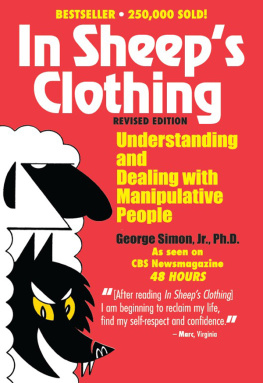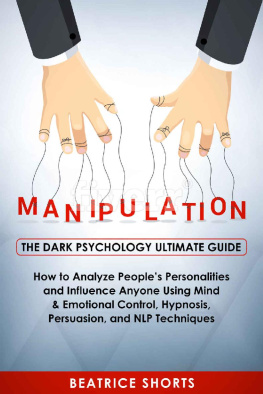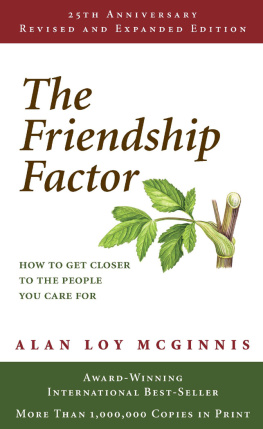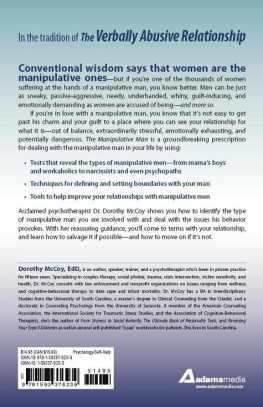THE H FACTOR of PERSONALITY
THE H FACTOR of PERSONALITY
WHY SOME PEOPLE ARE
MANIPULATIVE, SELF-ENTITLED,
MATERIALISTIC, AND EXPLOITIVEAND
WHY IT MATTERS FOR EVERYONE
Kibeom Lee and Michael C. Ashton

Wilfrid Laurier University Press acknowledges the financial support of the Government of Canada through the Canada Book Fund for its publishing activities.
Library and Archives Canada Cataloguing in Publication
Lee, Kibeom, 1966
The H factor of personality : why some people are manipulative, self-entitled, materialistic, and exploitiveand why it matters for everyone / Kibeom Lee and Michael C. Ashton.
Includes bibliographical references and index.
Also issued in electronic format.
ISBN 978-1-55458-834-3
1. Personality. 2. HonestyPsychologicial aspects. 3. HumilityPsychological aspects.
I. Ashton, Michael Craig, 1970 II. Title.
BF698.3.L43 2012 155.264 C2012-904278-1
Electronic monograph issued in multiple formats.
Also issued in print format.
ISBN 978-1-55458-864-0 (PDF).ISBN 978-1-55458-865-7 (EPUB)
1. Personality. 2. HonestyPsychologicial aspects. 3. HumilityPsychological aspects.
I. Ashton, Michael Craig, 1970- II. Title.
BF698.3.L43 2012 155.264 C2012-904279-X
Cover design by Martyn Schmoll. Front-cover portrait by Veer; graph from iStockphoto.
Text design by Janette Thompson (Jansom).
2012 Wilfrid Laurier University Press
Waterloo, Ontario, Canada
www.wlupress.wlu.ca
This book is printed on FSC recycled paper and is certified Ecologo. It is made from 100% post-consumer fibre, processed chlorine free, and manufactured using biogas energy.
Printed in Canada
Every reasonable effort has been made to acquire permission for copyright material used in this text, and to acknowledge all such indebtedness accurately. Any errors and omissions called to the publishers attention will be corrected in future printings.
No part of this publication may be reproduced, stored in a retrieval system, or transmitted, in any form or by any means, without the prior written consent of the publisher or a licence from the Canadian Copyright Licensing Agency (Access Copyright). For an Access Copyright licence, visit http://www.accesscopyright.ca or call toll free to 1-800-893-5777.
LIST OF BOXES
ACKNOWLEDGEMENTS
Were grateful to several of our friends and colleagues who encouraged this project and gave extremely helpful comments on an earlier draft of the book: Derek Chapman, Gordon Hodson, Paul Tremblay, Reinout de Vries, and Narnia Worth. We likewise obtained very positive and constructive input on a recent draft of the book from Robert Mackwood, from Taya Cohen, and from two anonymous reviewers. Our book is much improved for these insightful suggestions.
We thank Lew Goldberg and Gerard Saucier for their generosity in sharing the extraordinarily rich datasets from their Oregon community sample and from their English-language lexical research, and also for their insights on personality structure.
We also thank Steve Rubenzer for sharing the facet-level data from his study of the personalities of US presidents.
Wed also like to thank the editorial team at Wilfrid Laurier University Press for all their work on this project: Rob Kohlmeier for his extremely efficient management of the editing process, Leslie Macredie for her great efforts in marketing, and especially Ryan Chynces for his courage in taking on this book and his confidence in working with us. Were also grateful to Matthew Kudelka for his excellent copy editing.
Were grateful to the institutions that have supported our research program. We thank the Social Sciences and Humanities Research Council of Canada for the grants that funded many of our projects. We also thank the University of Calgary and Brock University for their ongoing support. This book in particular was funded by Brock Universitys Council for Research in the Social Sciences.
Kibeom thanks his wife and two daughters, who have patiently talked about personality structure over the dinner table many times. He also thanks his mother, his brother, and his brothers family for their ongoing support. Finally, he dedicates this book to his late father, who would have loved reading it.
Mike thanks his whole familyhis parents, his sister and her family, and his in-lawsfor all their encouragement. He especially thanks his wife for her enthusiastic support, and he dedicates this book to her.
1
MEET THE H FACTOR
Mary and Jane have a lot in common. Both are young women in their last year of study at the same law school. Each grew up in a two-parent family in a middle-class neighbourhood. Yet in some crucial ways they could hardly be more different.
To Mary, the law is like a martial arta way to defeat opponents by mastering many complex manoeuvres. She chose law as a career because she wanted to make a lot of money, and with that aim in mind she has mainly studied the more lucrative legal specialties, such as corporate law and litigation. To achieve her career goals, Mary has made a point of skilfully ingratiating herself to certain influential professors. By applying just the right amount of flattery, she hopes to make the connections she needs for a good position after completing her degree.
Janes approach to the law is much more idealistic. She views the law as a means of achieving justice, and her goals in studying law are to help people and to make a difference. Shes trying to decide whether to work in the criminal justice system as a prosecutor or public defender, or to work for a not-for-profit organization. Jane has had some contact with her professors, chiefly when she has asked them to explain some of the finer points of the law. She tries to be pleasant and polite with her professors, but she would be uncomfortable trying to curry favour with them.
Mary and Jane are both single, but both plan to marry someday. For Mary, any prospective husband must hold some prestigious position in society; besides being wealthy, he should carry the trappings and the appearance of a very important man. Anything less just wouldnt be worthy of her. For Jane, these considerations of money and status dont really matter. Shes much more concerned with finding a man she can love, and although she might not realize it, this will probably mean a man who shares her values.

As with Mary and Jane, Bill and Dave are similar in some ways. Theyre both middle-aged men, and both own small automobile repair shops in towns just an hours drive apart. But again, in some ways they are opposites of each other.
Bill and Dave have entirely different outlooks on how to run a business. Bills motto could be summed up as Let the buyer beware: when customers come to his shop, hell often recommend repairs that arent really necessary, and hell often save money by substituting lower-quality parts for those that are intended for a given vehicle. Often, if Bill judges that a customer will take the deal, he offers to do the work for cash, so that no receipts are kept and no taxes are paid.
Dave, by contrast, never deceives his customers or the tax authorities. He recommends only the repairs that are really required, which often means that his customers have less repair work done than they thought they would need. The parts he uses are always as stated on the invoice to the customer. Every transaction is recorded for tax purposes.
Next page







